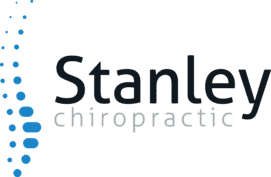What Are The Stages Of Sciatica?

Typically, sciatica pain comes in bouts rather than being constant. Most patients experience it as sharp, shooting pain and burning sensation that begins in the lower back and radiates down to the legs and feet. There are several causes and risk factors of sciatica – some only cause mild discomfort, while others can cause severe pain and impaired mobility.
Sciatica pain and associated symptoms usually recover slowly and may take several days to weeks to recover. In general, sciatica usually heals in three stages.
Phase One:
-
Reduction in Numbness, Pain, And Tingling
It’s challenging to get rid of the pain, numbness, and tingling you’re feeling due to sciatica. This is probably the longest phase among the three. You can get rid of these troublesome symptoms, though. Chiropractors, physical therapy specialists, and related healthcare providers use the full range of methods and modalities, including heat and cold massage, spinal manipulations, exercises, and stretches, to help ease pain and get rid of these symptoms.
How fast you will recover depends on several factors, such as your general health, the severity of the pain, the underlying cause, and the skill of a chiropractor. Besides this, it also depends on;
- Are you currently in good health?
- Do you feel stressed out?
- Do you engage in physical activity, or are you sedentary?
- Are you the type of person who will stick to your exercise program step by step?
No matter how well your therapist delivers the specific treatment, you must take an active role in the first phase of your recovery.
Phase Two:
-
Getting back Movement and Full Strength
While your chiropractor helps you reduce your pain and associated symptoms, you will need to complete an in-clinic adjustment and exercise program. By undergoing the spinal adjustment and following these simple, goal-based exercises, your body will be retrained to handle normal movement. Your chiropractor will monitor and progress your adjustment and exercise program as you get better.
Even if you find it painful at first, these specific exercises will make you stronger. Once your body has adapted, you should begin strength-building exercises and move on to something more challenging. You will benefit from these exercises as you move into Phase Three.
Phase Three:
-
Resume Your Previous Activities
Chiropractors move you from adjustments and exercises to your previous activities in Phase 3. Once you are relatively pain-free and at full strength, most chiropractors usually ask, “is there anything you’ve avoided doing in the last month that you wish to get back to?”.
It may be walking, gardening, playing sports, or going back to the gym. It’s time to return to those activities as you are pain-free and have returned to full strength! Spend the next month doing those things you’ve been putting off. You should also continue doing home exercise programs according to your chiropractor’s instructions to keep going. As responsible chiropractors, we always tell our patients, “We can get you better in the clinic, but once you leave, following our instructions will help you STAY healthy.”
